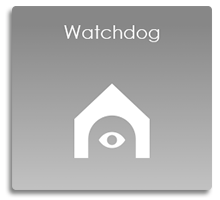Energy management processes

In addition to technical processes such as operations management or maintenance, many companies and organizations also need to map commercial and other subsequent processes and support them with the corresponding resource and consumption data. We have developed customizable solutions for a large number of these processes that are directly related to energy and resource consumption, which provide tailor-made support for your respective workflows, bringing you much closer to achieving your company’s internal efficiency targets.
We’ll help you with:
- Accounting methods and pay-as-you-go system
- Measure management and documentation
- Energy and process performance indicators
- Demand forecasts and forecasts
- Environmental and waste management
- Operational management
- Batch management and optimisation
- Lifecycle management
- Fault message management and notification management
It is indispensable to allocate costs to different consumers due to high costs for energy and resources. The resulting transparency is also an important (educational) factor for energy savings in addition to pure further cost allocation.
WiriTec® C provides various options and methods to carry out these cost allocations. These options range from plain further cost allocations based on defined allocation formula such as area percentages, e.g., up to complex, multi-level billing workflows based on flexible, time-depending rule sets. WiriTec® C enables you to allocate energy- as well as resource costs to the respective consuming units.
Not only ISO 50.001, but also internal guidelines and policies often require an energy efficient behavior and the respective documentation thereof. To achieve these objectives, global energy savings targets are centrally defined to be reached by execution of respective energy savings measures.
As this is certainly not an end in itself, not only the goals, but also the measures executed as well as those planned need to be documented, and the actually achieved savings as well. To meet these requirements, WiriTec® C provides an adequate tool-set consisting of the modules measure-management and -documentation. Apart from the seamless documentation of all relevant parameters, evaluation mechanisms are available as a matter of fact, to be able to easily control and quickly communicate respective results.
As the absolute consumption of energy and resources does not say anything about the efficiency of the use, energy as well as process performance indicators are indispensable.
The scope of functionality of the formula editor provides customers widespread possibilities to calculate and present such performance indicators. Users can choose from a large variety of options: from basic calculations such as consumption referred to an area over to slightly more complex performance indicators based on production parameters up to highly sophisticated calculations using regression analytics or other mathematical procedures.
Reliable and accurate forecasts about future energy and resource demands in companies with high energy costs are absolutely mandatory. It only can be purchased at favorable conditions if you know when and how much energy is needed. Furthermore, the negotiating position can be improved towards the suppliers.
We have developed various forecasting tools in order to support our customers in this important issue. The easiest use case is to calculate a linear consumption trend based on defined past consumptions using the trend analysis. This approach is useful for checking on contractually agreed purchase volumes, for instance. Forecasts, in return, go a step further by calculating a forecasting model based on media consumption of a past period. On one hand, this forecasting model is based on external targets, and standardises the past values by influencing factors on the other. Regression forecasts reach beyond the previous methods by starting with factors being the cause of consumption. Based on past consumption, dependencies of consumptions from factors are calculated and trained over a longer period of time. This calculation basis allows to predict future consumptions very precisely.
Nowadays, most medium-sized and large companies need to provide information about their consumption of energies and resources as well as produced waste and emissions and report them accordingly. The reporting itself is often standardised and automated or was being outsourced to an external service provider. Therefore, the actual collection of underlying data puts the companies in a position of considerable investments and difficulties. This applies particularly for large companies or those with many distributed locations.
Since the quantities and not the costs are mandatory for the reporting, these must be manually transferred from the invoice to the reporting system. This annual (typical reporting period) data collection is not only very time-consuming but also very error-prone. All collected data will be permanently and centrally stored and can be analysed graphically and alphanumerically with our standard methods. Year comparisons, comparisons of different locations or business units or even the development compared to internal guidelines can be easily created.
Existing internal or external reporting tools can be filled with the required data via standard interfaces.
IT support for operational management models is gaining importance as more and more contracting agreements are concluded. These contracts have long durations while boundary conditions which were originally decisive for the contractual conditions are changing immensely. The contractor has to provide optimal service for his installations while being confronted with an additional challenge: He has to deal with new conditions. A good data situation which documents changes in the process flow and serves as evidence helps him.
Basis is the smooth documentation of energy and resource consumptions for years combined with process and environment information which are the decisive fundament for consumption. Running, automatic monitoring processes with intelligent features can detect trends and deviations. Therefore, it can serve as an early warning system for the contractor. At the same time, it is made transparent for the end customer how its energy and resource consumption is changing. The technical and maintenance and care processes are important in addition to economic aspects which are aimed at the optimisation of costs.
The determination of the energy demand for production processes are challenges that companies which are serious about energy efficiency need to face. Strategies for energy optimisation can only be developed if it is known which amounts of energy and resources are spent for individual production steps.
On the one hand, it needs to be determined under which circumstances and at which process stage a more detailed view is worth to consider. On the other hand, the suggestibility plays a decisive part. Serious process changes are rarely a subject for discussion as this intervention in the core business of a company often cannot be justified by saving energy.
Thanks to the powerful formula editor on one hand and the complex rule sets on the other, we are able to allocate different energy volumes to the individual production and process steps and calculate the individual consumptions. Thus, you will get a precise idea not only of your production consumptions, but you will also recognize both inexplicable discrepancies and peaks. As a matter of consequence, you will then be able to realize existing saving potentials.
For a considerable amount of time, our sister company speedikon FM AG has been intensely working on the topic of lifecycle management. In close cooperation with customers, a series of modules has been developed which facilitate a lifecycle perspective on both real estate and technical facilities keeping a clear focus on costs. speedikon FM AG pursues a really pragmatical approach, resulting from different methods that customers have already applied successfully.
We are supporting our colleagues providing useful energy management data, as both energy consumption as well as the frequency of faults strongly depend on the respective quality condition of a building or a technical facility. The integration of energy management into lifecycle management expands the database and improves the informative value.
Discover more information on this topic on speedikon FM AG website.
In complex buildings and installations a large number of faults, warnings or other procedural and status messages can occur which need to be interpreted and evaluated immediately. Often there is no uniform source of interference but a variety of installations, control technologies and monitoring systems from various manufacturers with different and often proprietary protocols and methods for message dispatch and administration.
WiriTec GmbH created a system with its reporting management which centrally gathers all notifications from various sources and interprets comprehensively in order to unknot this Babylonian language chaos.
The system has a very high level of flexibility with regard to device, bus, field level and IT interfaces in order to facilitate a connection to different data sources. Therefore, all customary and standard installations and control technologies as well as existing Helpdesk systems can be easily connected and integrated. Even analogue notifications can be collected, interpreted and imported into the system.
All faults and profile violations are entered into the central „event table“ and are available for further processing or interpretation. Therefore, no notifications are lost and the processing process can still be understood later on.
Help and service desk
The help and service desk systems are closely linked to fault messages and are customized by our sister company speedikon FM AG to support the entire process of fault processing through to order placement, material ordering and personnel deployment. Manually submitted messages, such as the failure of a heating system, often overlap with automatic fault messages from systems. Coordination is difficult in separate systems, whereas a centralized service desk solution can effectively coordinate these interactions to avoid duplication of work and provide informed feedback. A central platform for ticketing is essential for further processes such as maintenance, lifecycle considerations and investment decisions.
The objectives of the help and service desks are the complete traceability of faults, statistical evaluations and the exact allocation to the cause. The latter provides important information about the reliability and stability of assets as well as the associated costs and risks. This supports investment decisions and their efficiency checks over time. The help and service desk has established itself as a transparent platform for technical processes and influences future investments and process adjustments.

Watchdog
Our watchdog continuously monitors measured values and warns you in good time if values are about to be exceeded or undercut. This proactive notification makes it possible to quickly take measures and thus ensure the operational safety and efficiency of your assets.
The watchdog can be integrated into your existing IT infrastructure and offers a reliable solution for monitoring critical parameters.
You need a customizable solution for your energy management processes?
Then contact us today – we’re happy to help with any questions you might have!


